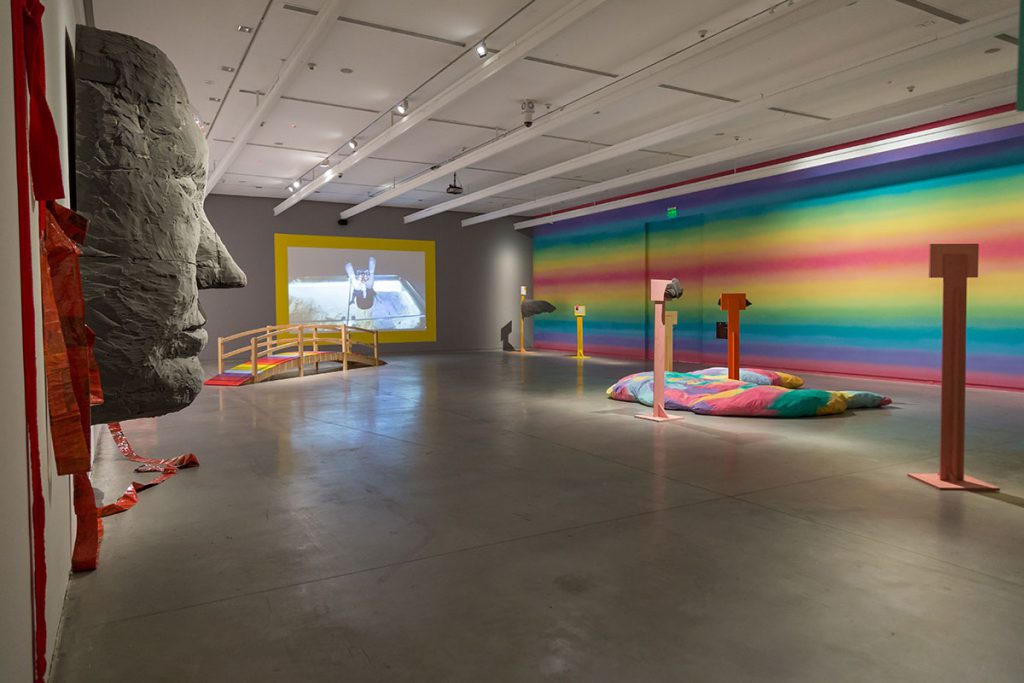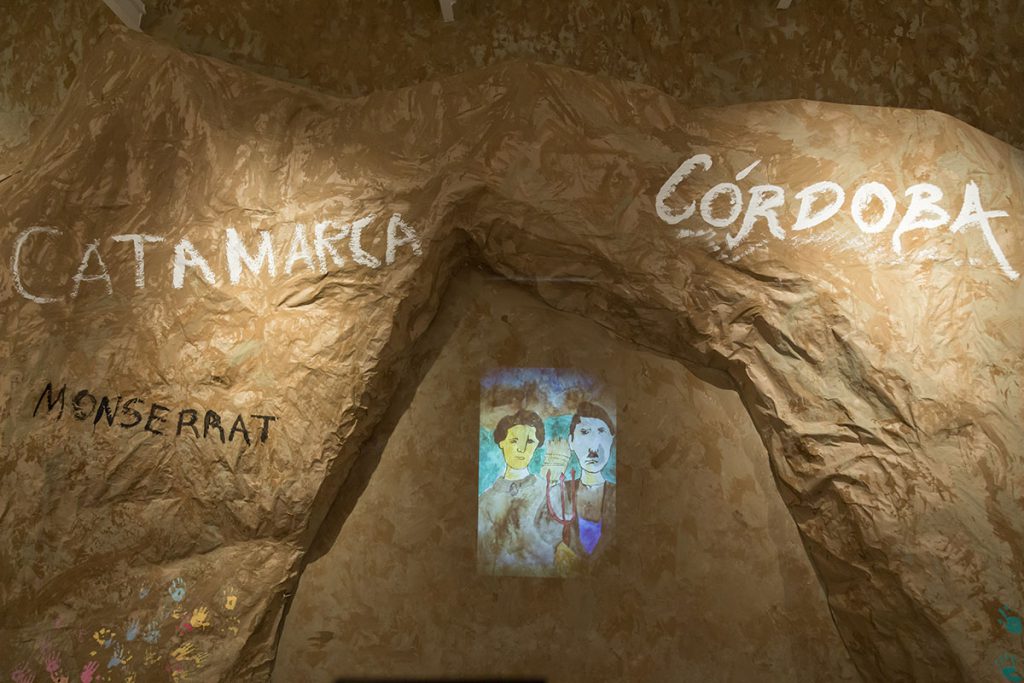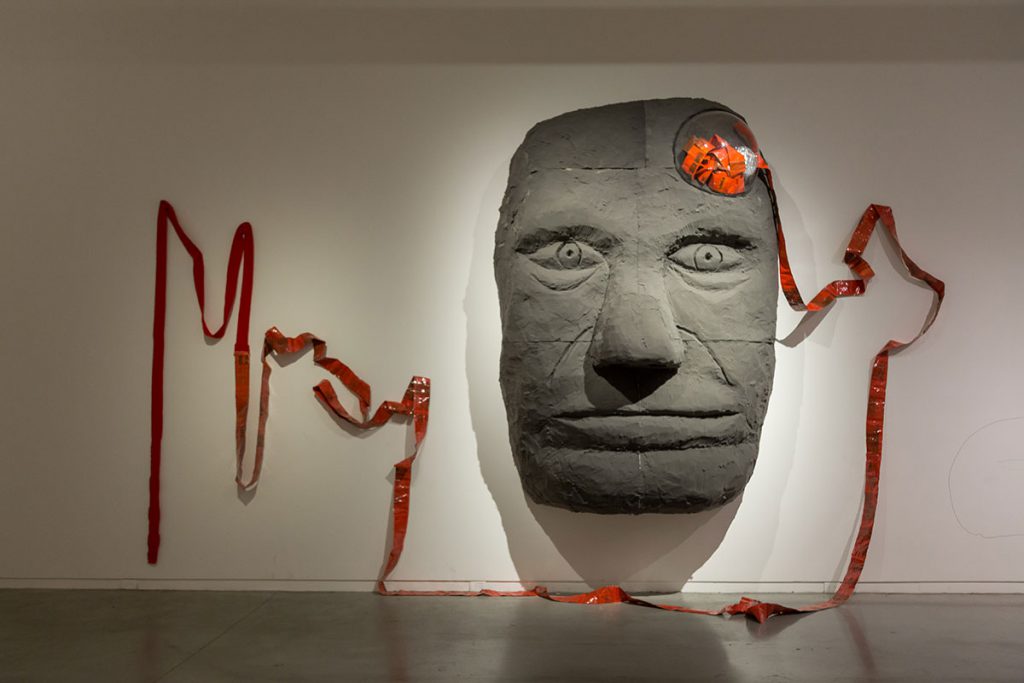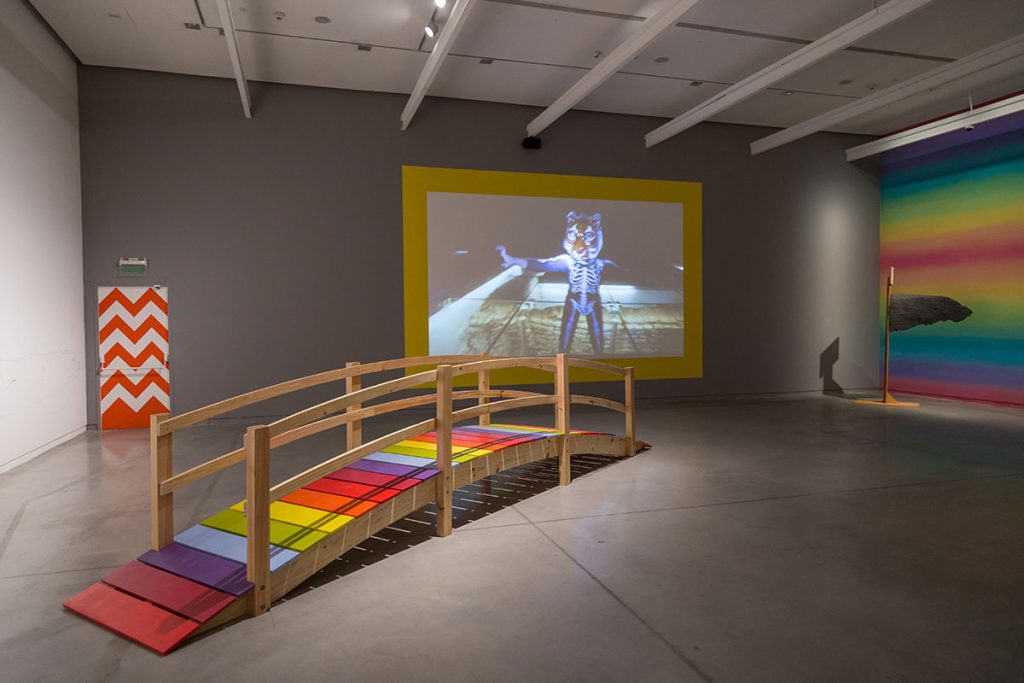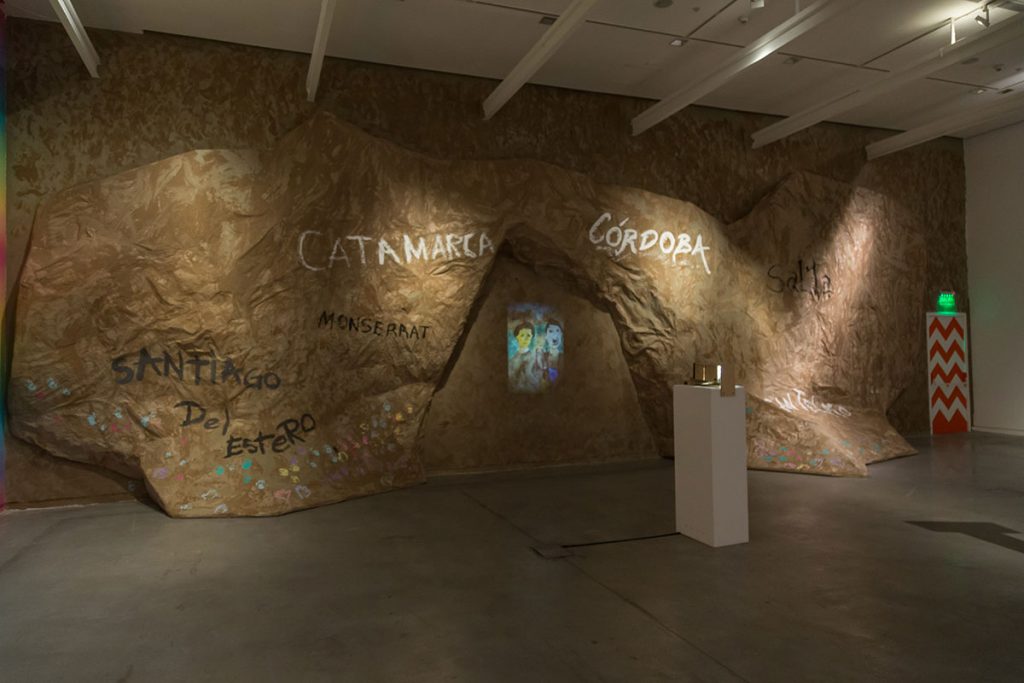
With the large-scale installation Wild Bull, Rose (Durban, South Africa, 1974) has created an apparently playful landscape that under her intense gaze is transformed into a platform for a bold criticism of the irrational power and reach of Nazi movements outside of Europe.
Beginning with a large soft sculpture representing Pangea, the artist tells the tale of the brutal separation of peoples. At one end of the room, a cavern symbolizes the indigenous peoples of the Americas, which the artist brings up to date by writing the names of slave communities in colonial Argentina as graffiti. In the middle of the cavern is a portrait of Adolf Hitler and Eva Braun suggesting that he moved to South America in 1945. The artist also points out that the Nazis were a direct influence on Apartheid in South Africa, which began in 1948. A monumental head dominates the gallery: the face of Dimitri Tsafendas, killer of Hendrik Verwoerd, the Prime Minister of South Africa known as the ‘Architect of Apartheid’. Tsafendas claimed to have killed Verwoerd in 1966 on the orders of an earthworm.
Rose’s landscape presents a tension between the twin terrors of Nazi-ism and Apartheid and the undeclared utopia of a better world as seen in children’s drawings and the powerful presence of a double rainbow, which Rose has seen twice in her life, once on the day that Nelson Mandela died.
Rose studied Fine Art at the University of Witwatersrand, Johannesburg, and received a Masters of Fine Arts from Goldsmiths College in the UK. Notable solo exhibitions by the artist include those held at The Project, New York, USA (2004); her retrospective at the Johannesburg Art Gallery, South Africa; Bildmuseet, University of Umea, Umea, Sweden (2011); and an exhibition at the Museo Nacional Centro de Arte Reina Sofia, Madrid, Spain.



